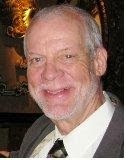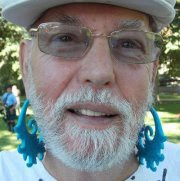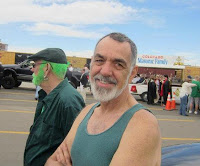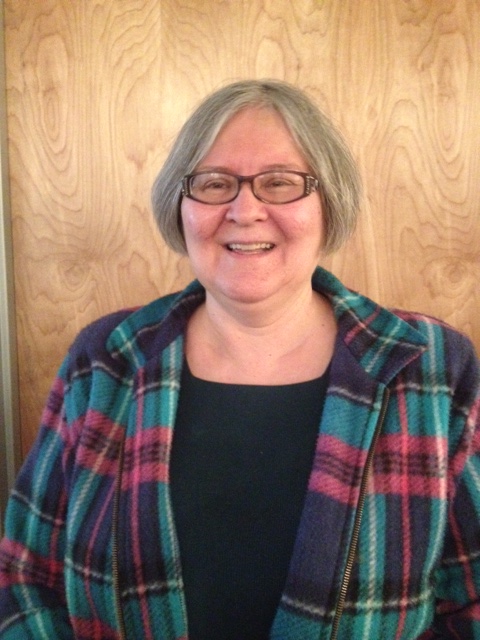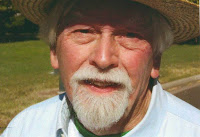I started revealing my gay self in a religious context subtly when I suggested in a church course on sexuality that we might want to think of bi-sexuality as the conceptual norm for our inquiry. That would make good use of Dr. Kinsey’s scale arising from his 1950s research into American male sexuality and would give us as a group a more flexible way to read the books we were going to consider. I had structured the group on a seminar model providing a small library of books from which each participant could select to use as a source in our discussions. To me it seemed like I was opening the closet door just a crack. It made sense in the church where I worked, a broad church in that it gathered conservatives, moderates, and liberals together for worship, study, and service, a congregation that historically hired moderates and liberals for their ministerial staff. We talked together for those weeks trying to understand ourselves, our kids, our society. We kept the peace as we did so. My wife participated in the study.
A few years later I wrote for our church’s publisher an adult study piece that included varying spiritual perspectives. I made sure there was a gay presence in that manuscript as well as many other points of view and experience. In another congregation I wrote a discussion guide for an adult group studying the book Is the Homosexual My Neighbor? by Letha Dawson Scanzoni and Virginia Ramey Mollenkott (HarperCollins, 1994). While there I also edited a study paper on homosexuality prepared by a group in our regional church. Throughout my years of ministry I thankfully accepted homosexual musicians into our choir lofts and worked with several gay and lesbian organists. Thirty years into my career, when finally I attended the annual meeting of the Association of Disciples Musicians, my wife feared our marriage might be over. Whatever I believed I was doing, she seemed sure I was coming out.
Eventually our marriage did come apart, and soon after that sad experience and while in good standing in our denomination I left active ministry having dedicated many creative years to the work of our local churches. I was going to live an openly gay life and chose to do so as a lay person rather than clergy. I assumed I’d find a nice liberal congregation somewhere near my home on Capitol Hill in Denver and started attending services—church shopping as it were—something I’d observed many lay persons do. While searching for an apartment, I had walked the neighborhood and noted what churches were there. I decided to look away from the denomination rather than within it.
One Sunday I walked down to the First Baptist Church with its beautiful brick Georgian building featuring sturdy brown granite pillars on the façade and a very tall spire on top. I liked their location right across from the State Capitol building and near my home. There I found a worn out building in which gathered a nice group of worn out people who seemed to be tolerating their rather average rock band that asked them to sing songs they barely knew. I watched and listened to everything and decided not to return mainly because they were in an interim period between Senior Ministers. I’d suffered too many interim ministers during my career and couldn’t see how suffering theirs would promote my spirituality.
I went to St. John’s Episcopal Cathedral with its soaring rock towers and magnificent stained glass windows, a virtual symbol of a life of prayer. There I was rather thrilled with the organ and choir music but seriously put off by the sin and redemption language of the liturgy, ideas I had long ago set aside. Furthermore, in my move to Denver, I had got rid of most of my fancier clothes and realized I really did not want to fit into a dress-up social group. I knew it was not what I was looking for, besides I just didn’t have the kind of ritual liturgical need to which Episcopalians and many gay men respond in such churches.
The next Sunday I decided to visit the mostly-gay Metropolitan Community Church. I knew the history of that movement and realized that while it might be too conservative for me, it offered an open social environment. I was pleased with the organ music, entertained by the presence of a couple of drag queens in the choir, responsive to the tone and style of the sermon, and even received communion at the altar. I loved the enthusiastic singing of the congregation (couldn’t say the same for the choir even though I tried hard not to be a musical snob) and I especially liked being surrounded by gays, lesbians, transgendered persons and, I assumed, a bunch of bi-sexual folk. Knowing I was way over-loaded with needs and experiences related to my many recent changes, I decided to attend that nice group for a few weeks wondering if it might be for years. Week after week I smiled, laughed, felt sad, shed tears, and eventually found a kind of spiritual equilibrium that was helpful as I began living more deeply into my life as a gay man, a massage student, a friend of new gay and straight acquaintances, an artist, and a writer. When within a few months I quit crying in church and then began to be irked by the language of the little bit of liturgy they used there, I realized I had more things to deal with in my spiritual coming out. Long had I been displeased by the language of most churches and with doctrinal constructs that pervaded the worship, even that of the Disciples of Christ with whom I had worked. I hated the exclusionary aspects of words that were used, innocently and thoughtlessly too often. I realized my relationship with the church had now become more receiver than giver, and I didn’t like what I was receiving. Still the sermons sparkled, but the song texts, anthem lyrics, and weekly-repeated words of the communion service were becoming onerous to me. I had failed to become an official member of the congregation—it seemed somehow too soon—and realized I needed to look further into the church community to see what I could find.
I began attending the First Unitarian Church and found one of their preachers really communicated to me as she spoke from a liberal, open, Christian point of view and seemed herself to be working on the same kinds of spiritual and theological themes and experiences as was I. The rest of what was happening around me in that congregation I found neutral and uninspiring. Even in that most liberal atmosphere I stumbled over language, like when the choir sang an anthem of Anglican origin (one of my musical favorites) that ended with a very Trinitarian blessing, “Glory be to the Father and to the Son and to the Holy Ghost.” Etc. The words had been rewritten but they were still Trinitarian in their form and actually in their meaning. I knew choir directors and singers were rarely theologians, but to hear barely de-Trinitized words in a Unitarian service? It seemed too corny to me. Since I couldn’t attend weekly due to a part-time job, I missed quite a few weeks in a row. When I returned on an Easter Sunday (of course, it was not really Easter at a Unitarian church) I found that their sparkling preacher had left and a nice but bland interim minister was now in place for several months. I didn’t relate to anything said in that service and chose not to return. Certainly I was not going to be spiritually nurtured there.
Now I know that others cannot make one spiritual. The ultimate responsibility for spirituality is located in the experience and imagination of the individual—you see ultimately I’m very Western, very American. I saw clearly that my own sense of spirituality, quality, and meaning was going to have a tough time being met within any church group. Of course, I was not un-used to that having been who and whatever I always have been. I thought about this a lot and within a year or so realized that my new spiritual congregation was made up of a group of friends with whom I drank coffee and occasionally went out and of my group of massage clients whose aches and pains—and often confessions—I dealt with as I rubbed into their skin oils, lotions, and love. The focus of my spirituality changed due to my participation in my new major community made up mostly of gay, lesbian, transgendered, and bisexual people.
© Denver, 2013
About the Author
Phillip Hoyle lives in Denver and spends his time writing, painting, and socializing. In general he keeps busy with groups of writers and artists. Following thirty-two years in church work and fifteen in a therapeutic massage practice, he now focuses on creating beauty. He volunteers at The Center leading the SAGE program “Telling Your Story.”
He also blogs at artandmorebyphilhoyle.blogspot.com

